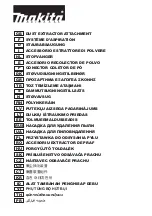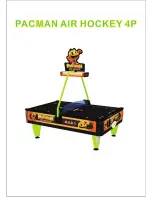
5-1 Troubleshooting
5 Troubleshooting and Maintenance
20
5 Troubleshooting and Maintenance
5-1 Troubleshooting
Two diagnostic indicators labeled F1 and F2 are located on the back cover of the receiver. These indicators will
flash a discrete number of flashes to indicate the possible source of a problem. Only those codes which can as-
sist the user in correcting a fault are listed in the following text.
5-2 Maintenance
The Checkout Procedure (Appendix B) should be performed at least every three months or more frequently de-
pending on machine usage. Only qualified personnel should perform the procedure. Inspection logs should be
kept with the machine records.
Oil, dust and grease can build up on the plastic lens of the emitter and receiver and can affect operation of the
F3SS. A periodic cleaning will prevent these problems. Clean the lenses with a mild detergent or glass cleaner.
Use a clean, soft, lint-free cloth or wipe to dry. Painted surfaces may be cleaned with a mild degreasing cleaner
or detergent.
Table 5-1 Troubleshooting with F1 and F2 flashing indicators
Number of Flashes
on F1 or F2
Fault Description
Suggested Solution
1
More than one valid transmit code
detected by receiver
Check codes of adjacent systems. Set
to different codes
2 or 9
Code or mode not valid at power up
Check settings on internal DIP
switches. Set to valid setting.
3
Any DIP switch changed after power
applied. Invalid DIP switch setting.
Check DIP switch settings. Remove
and reapply power.
5
Output relay not properly responding.
Check output relays. If replacement is
needed return unit to OMRON.
All Other codes
Fault is not user serviceable.
Consult OMRON
Summary of Contents for F3SS
Page 4: ......





































